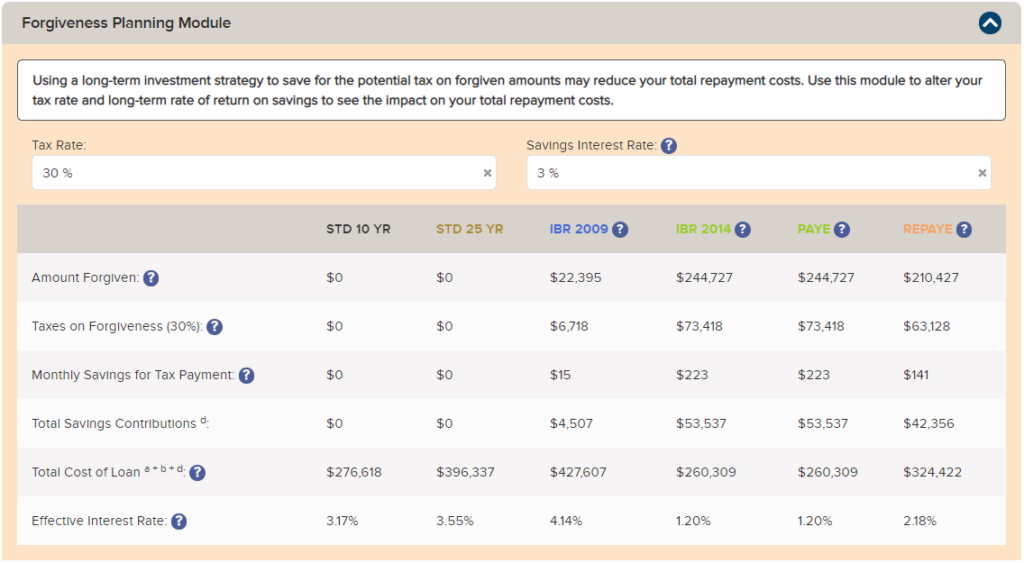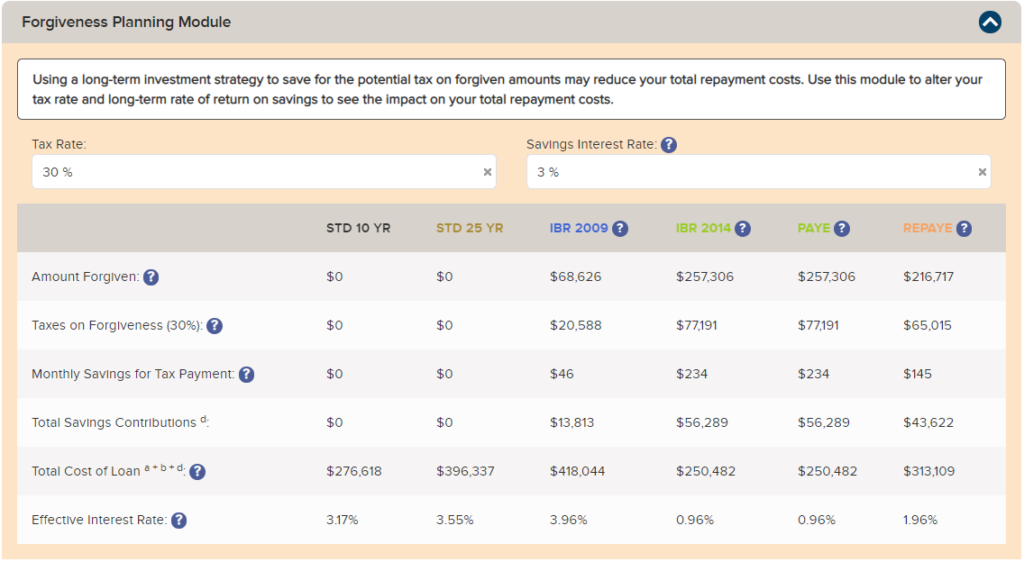Graduating Veterinary Students:
Here’s what the first two years of student loan repayment can look like using an Income-Driven Repayment strategy
Student loan repayment is financially and emotionally stressful. The earlier you have a student loan repayment strategy, the more time, money, and stress you can save yourself throughout repayment. As a veterinary student and new veterinary graduate, you can take action to jumpstart your financial wellness and minimize your student loan repayment costs.
Your final year of veterinary school:
It all starts with a tax return. While most veterinary students are not required to file a tax return during school, you can (and should) voluntarily file a federal tax return before you graduate, ideally during the last year of veterinary school. Doing so can really help with your post-graduation student loan repayment strategy and improve your financial wellness. For example, if you’re graduating in the spring or summer of 2021, file a federal tax return before April 15th of 2021 even if you don’t have to.
Immediately after veterinary school graduation:
The New Graduate Student Loan Repayment Playbook will guide you through making a repayment strategy. To summarize, you want to:
- Graduate
- Consolidate your student loans using a federal Direct Consolidation Loan
- End your grace period
- Choose your new loan servicer (FedLoan Servicing/PHEAA)
- Apply for an income-driven repayment plan: Pay as you Earn (PAYE), Revised PAYE, or Income-Based Repayment (IBR)
Filing a tax return with low or no adjusted gross income (AGI) before graduation will secure a $0/month “payment” for the first 12 months of student repayment after graduation. All income-driven repayment plans (IDR) require documentation of your taxable income to determine your minimum monthly payment. Your AGI is one of the “gold standard” measures used to determine your minimum monthly student loan payment. With a tax return on file representing your income as a senior veterinary student, you will be faced with the following IDR application question: “Has your income significantly decreased since you filed your last federal income tax return?”
It’s hard to have an income less than zero. Thus, with your AGI from your last year of veterinary school available, you can truthfully answer “no” and secure a $0/month payment using IDR for the first 12 months of repayment.
The first 12 months of repayment:
A zero dollar minimum payment on your student loans for the first 12 months will free up valuable resources to jumpstart your financial wellness. The money you are saving on student loan payments will allow you to:
- Move to your new practice location
- Build an emergency fund
- Build retirement savings
- Pay off credit card debt
- Pay down less flexible private student loans
- Save for a down payment for a home or practice
- Start a family
- Start your student loan forgiveness tax savings
- Work towards any other financial goals
A zero dollar minimum payment for the first 12 months will also reduce your total loan repayment costs should you reach forgiveness and have to pay the tax liability associated with your canceled student loans. Veterinarians who graduate with a student debt to income ratio greater than 2 are likely to reach student loan forgiveness using a plan like PAYE.
The average reported veterinary student debt to income ratio is 2.1 for the U.S. 2020 graduating class. Thus the average veterinary graduate is likely to benefit from a PAYE student loan repayment strategy that can include paying a tax on student loan forgiveness 20 years after starting repayment.
When you anticipate reaching a tax on student loan forgiveness, the most beneficial financial strategy is to pay the minimum your income requires and plan for the tax due on forgiveness. Filing a tax return before you graduate helps to minimize your early payments and reduce the overall total student loan repayment cost you experience with forgiveness.
The second 12 months of student loan repayment:
You will probably start your first private practice job about midway through the calendar year after graduation. When the first April 15th tax filing deadline after your graduation comes around, even if you’re earning the equivalent of $100,000 per year, only about half will be taxable income for that year.
When you renew your income-driven repayment documentation, once again, you’ll be able to answer “no, your income has not significantly decreased since you filed your most recent tax return.” The result will be another twelve months of low student loan payments using your income-driven repayment plan. It’s not until your third year of repayment (starting month 25 of repayment) when you can expect to have an IDR payment more closely representing a full year of taxable veterinary income.
Is This Really Worth It?
How Much Money Are We Talking About?
Let’s turn to the VIN Foundation Student Loan Repayment Simulator to quantify the impact of these strategies.
Scenario 1:
Let’s assume we have a 2021 veterinary school graduate with $210,000 of student debt at 5.75% and a $95,000 income in private practice. She did not have a tax return on file at graduation and is planning to pay her student loans off as fast as possible, sticking with the standard 10-year repayment plan. Her minimum monthly student loan payment would be about $2,305/month for the duration of repayment and $55,320 for the first two years (24 months) of repayment.
Scenario 2:
Next, let’s say the new graduate uses her salary as income-documentation for the PAYE repayment plan. The minimum monthly payment for the first 12 months would be $629/month. For the second 12 months of repayment, their minimum monthly payment would be about $649/month. The total payments made during the first 24 months of student loan repayment using PAYE would be about $15,336.
Scenario 3:
Finally, let’s look at the same new graduate but assume she has a tax return with a zero AGI on file at graduation (filed April 15th the year of graduation). She consolidates her student loans using a federal Direct Consolidation Loan, ends her grace period, applies for PAYE using her most recent AGI, and chooses FedLoan Servicing/PHEAA as her loan servicer. She enters the first 12 months of PAYE with a $0/month payment that also counts towards forgiveness. Let’s assume her first tax return on file as a veterinarian shows an AGI of $47,500, about half of her annual veterinary salary. Her second 12 months of repayment will have a minimum monthly payment of about $229/month. The total payments made during the first 24 months of student loan repayment using PAYE and your tax returns would be about $2,748.
Below is a comparison chart of the cash flow impact to the new graduate example above during the first 24 months of student loan repayment after veterinary school. The higher the numbers, the less you have a available to build other areas of your financial wellness:

Comparing Scenario 1 to Scenario 2, we see you can free up $39,984 over the first 24 months of repayment. Comparing Scenario 1 to Scenario 3, you can free up $52,572; and comparing Scenario 2 to Scenario 3, you can free up $12,588.
Notice also, Scenario 3 produces the lowest projected repayment costs (including the tax due on forgiveness), even compared to a standard 10-year plan strategy. By paying less in the first 24 months, you also help to minimize your total projected student loan repayment costs as well.
You can access significant amounts of money by filing a tax return before graduation and using those tax returns for your IDR strategy for at least the first two years of repayment.
Additional helpful tools:
Have more questions? We’re here to help! Reach out studentdebt@vinfoundation.org

Tony Bartels, DVM, MBA
Dr. Tony Bartels graduated in 2012 from the Colorado State University combined MBA/DVM program and is an employee of the Veterinary Information Network (VIN) and a VIN Foundation Board member. He and his wife have more than $400,000 in veterinary-school debt that they manage using federal income-driven repayment plans. By necessity (and now obsession), his professional activities include researching and speaking on veterinary-student debt, providing guidance to colleagues on loan-repayment strategies and contributing to VIN Foundation initiatives.



